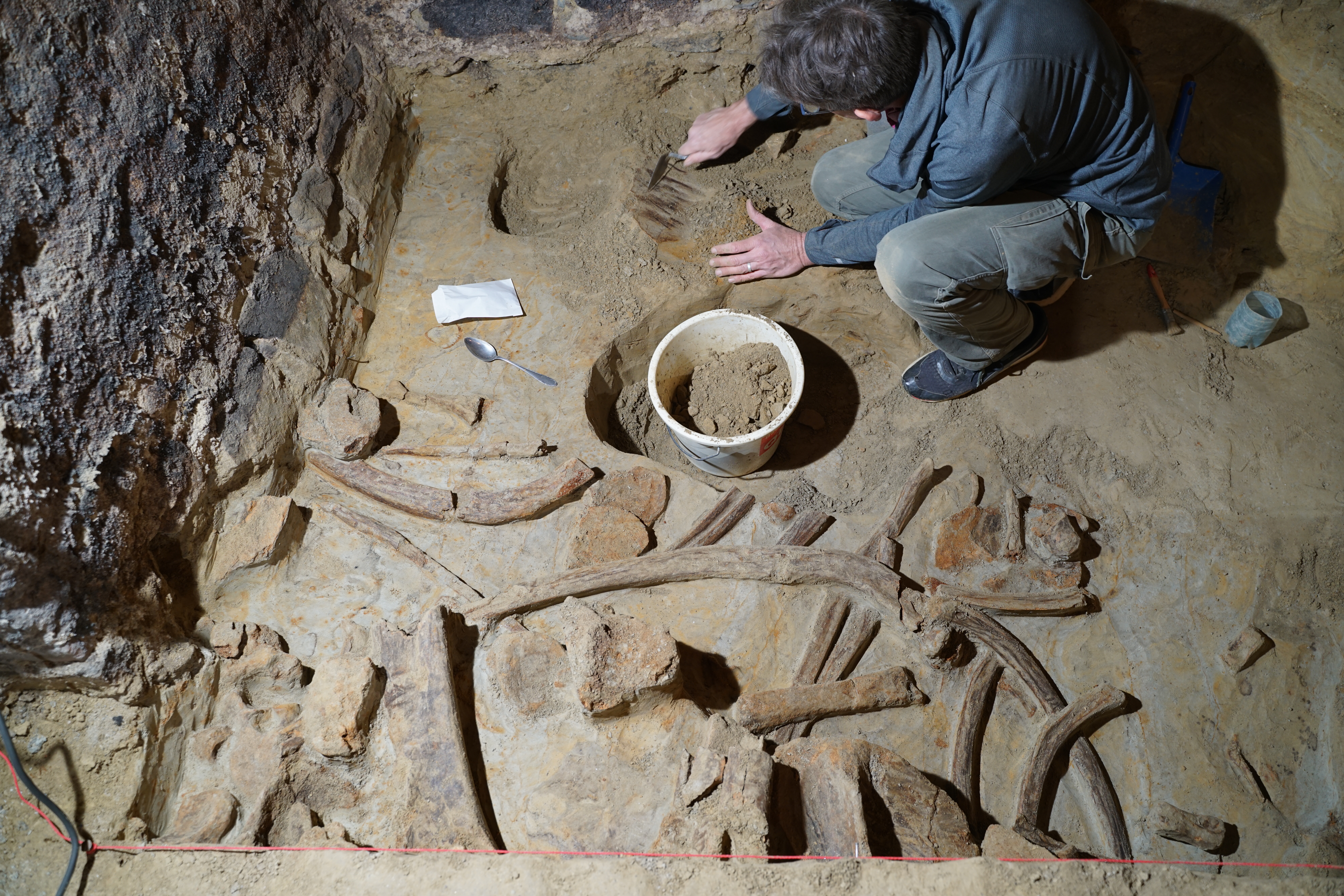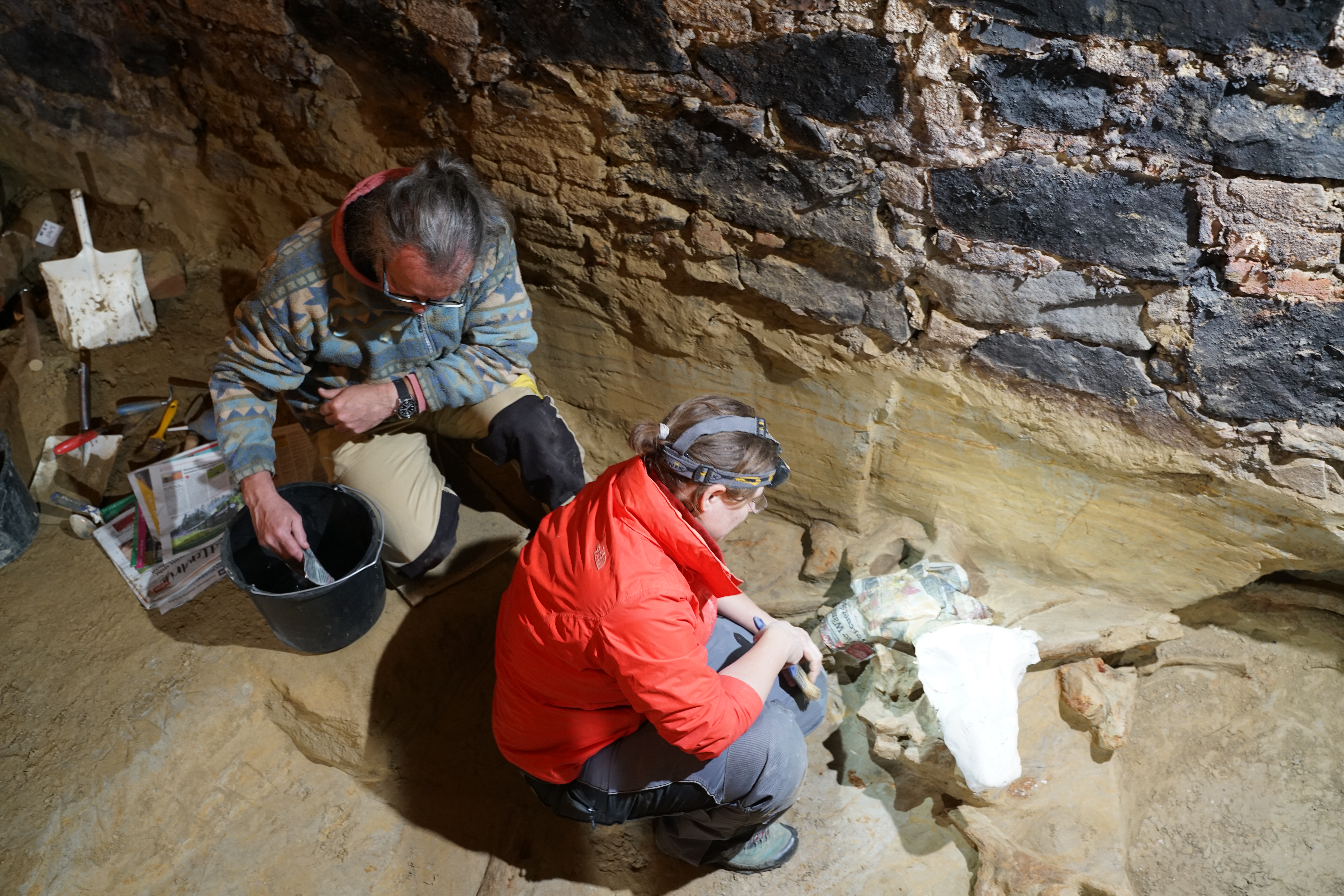Austrian Man Discovers Hundreds of Mammoth Bones While Renovating His Wine Cellar
Owner Andreas Pernerstorfer thought he’d found a piece of wood, but then he remembered something his grandfather had said about finding teeth in the cellar decades ago

Andreas Pernerstorfer was renovating his wine cellar in northern Austria when he stumbled upon something unusual.
Initially, he thought he’d found a piece of wood that had been left behind by his grandfather, he tells BBC News’ Bethany Bell.
But then Pernerstorfer remembered something his grandfather had mentioned once about finding teeth in the cellar while renovating it decades ago. He wondered if what he thought was a piece of wood was actually something more special.
When he reported his discovery, it turned out his instincts were right: Pernerstorfer’s wine cellar was full of huge mammoth bones—at least 300 of them, reports CNN’s Lianne Kolirin.
Since the middle of May, researchers with the Austrian Archaeological Institute at the Austrian Academy of Sciences (OeAW) have been excavating the site, which is located in Gobelsburg, a small town about 45 minutes northwest of Vienna.
So far, they’ve found bones that belonged to three individual mammoths, plus charcoal and stone artifacts. They believe the bones—which were stacked on top of one another—are between 30,000 and 40,000 years old.
“I’ve worked in many parts of the world and have never seen so many mammoths in one place,” says Hannah Parow-Souchon, the Austrian Academy of Sciences archaeologist who is leading the dig, to the Washington Post’s Victoria Bisset.

Eventually, the bones will be given to the Natural History Museum Vienna for restoration. Since they started their work this spring, archaeologists have only excavated a 129-square-foot site. They hope to return in August to continue digging.
Roughly 150 years ago, a neighboring wine cellar turned up charcoal, flint artifacts and jewelry. The archaeologists think the two wine cellars probably belong to the same site. Meanwhile, other similar sites in Austria and neighboring countries were excavated more than a century ago and have “largely been lost to modern research,” according to a statement from the Austrian Academy of Sciences.
The discovery marks the “first time we’ve been able to investigate something like this in Austria using modern methods,” says Parow-Souchon in the statement. “Such a dense bone layer of mammoths is rare.”
It’s not clear how or why three different mammoths ended up in the same spot—nor whether they died there or died elsewhere and were later transported to the site. One possibility is that early humans set up a trap or took advantage of the natural topography to ensnare them.
“We have strong indications that [humans] hunted for them but we have no idea how,” says Parow-Souchon to NBC News’ Alex Holmes. “We know that elephants have issues with slopes, so maybe they were hunted on a slope and therefore vulnerable.”
Mammoths, including woolly mammoths, are the extinct ancestors of modern elephants. These huge, tusked mammals roamed the Earth during the Pleistocene and early Holocene epochs, before disappearing roughly 4,000 years ago. Today, discoveries of the remains of these massive creatures can reveal insights into the species—and the ways that early humans interacted with them.
/https://tf-cmsv2-smithsonianmag-media.s3.amazonaws.com/accounts/headshot/SarahKuta.png)
/https://tf-cmsv2-smithsonianmag-media.s3.amazonaws.com/accounts/headshot/SarahKuta.png)